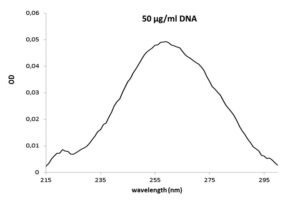Description
Tecan Spark by Tecan, Männedorf, Switzerland, can now provide walkaway processing of up to 50 assay plates per run with the addition of the new Spark-Stack integrated microplate stacker. This versatile and field-upgradeable module is designed to reliably automate plate loading, unloading, and restacking for non-lidded SLAS-format microplates from six to 1,536 wells.
“It’s a multimode microplate reader which means you can do various experiments with it. Many kinds of 96-well plates can be used but NanoQuant plates are especially useful when you measure fluorescence intensity with small volumes of 2 uL. You can also make methods for automated enzyme assays. Here’s what I usually do with it: Bradford assay for protein quantification, small volume DNA or RNA quantification with NanoQuant plate, quantification of fluorescence-labeled small molecule, WST-1 assay (cytotoxicity assay, enzyme assays.”
- – Seoul National University
The SPARK Multimode Microplate Reader platform provides a suitable solution for any life science research or drug discovery application. This gives researchers the freedom to configure the Reader product according to their current needs and fully upgrade it to access other research technologies and capabilities in the future.
Tecan Spark Key Industries
- Biopharmaceutical and Biotechnology
- Cosmetics & Personal Care
- Education & Academics
- Food & Beverage
- Pharmaceutical
Easy selection of one of the four preset configurations for a specific application segment provides a fast solution to your research problems. The fully configurable platform also allows you to personalize your Spark reader. The Spark is also upgradeable so that you can add modules anytime. The chosen configuration of the Tecan plate reader allows reading in microplates from 6 to 384 wells in:
- Absorbance with a high-speed monochromator (scanning from 200nm to 1000nm), endpoint, kinetic, or multiple points in the well for ELISA, BCA, and MTT techniques.
- Top-filter fluorescence for the following applications: TRF, FRET, nucleic acid quantification (PicoGreen), cell viability/toxicity assays (BrdU, Resazurin), fluorescent protein measurement (GFP, RFP, YFP).
- Standard “Glow” luminescence with a dedicated photon counter.
Spark Technology
High-Speed Monochromator
Full absorbance spectrum scan in less than five seconds
Spark’s dedicated, patent-pending High-Speed Monochromator is designed to set new standards for absorbance measurement speed and accuracy.
Unmatched combination of wavelength accuracy and scanning speed

NanoQuant Plate
Fluorescence – Fusion Optics
Revolutionary design offers sensitivity with flexibility
Spark’s Fusion Optics represents the first optical solution to combine monochromators’ flexibility with filters’ sensitivity in a single fluorescence measurement.
A leap ahead of hybrid readers
Spark can be equipped with filters, Tecan’s state-of-the-art QuadX Monochromators™ double monochromator system, or a combination of both. Unlike hybrid multimode readers, this concept allows users to choose between filters and monochromators for excitation and emission independently. This unique feature is available for all fluorescence-based detection modes – including standard top and bottom measurements, TRF, FRET, TR-FRET, and FP –delivering shallow detection limits and unlocking new possibilities. SparkControl software provides effortless control of the system, enabling easy selection of filters or monochromators on the fly.
Summary
Tecan Spark multimode reader offers excellent performance for fluorescence assays with its unique Fusion Optics. The combination of filter and monochromator in the exact measurement gives unprecedented flexibility without compromising sensitivity.
The environmental control features, imaging capability, and conditioned kinetics allow you to automate and standardize cell-based assays with high reproducibility.
Tecan Spark is the ideal multimode reader when working with cells and fluorescence in combination with special read functions like lens-based bottom read, automatic z-focus, and optimum read function.
Reference Library

Reviews
There are no reviews yet.